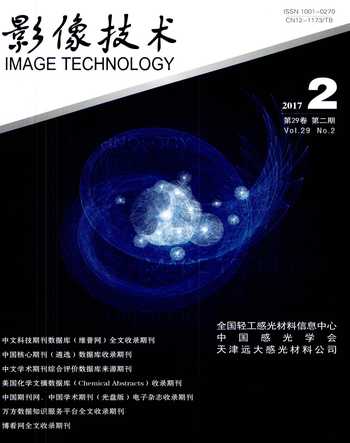低場磁共振對膝關節軟骨損傷評價的Meta分析
滿玉琳 郭佑民 楊靜 尤葆華


摘要:目的:基于循證醫學理念,采用Meta分析法定量評價低場磁共振(MRI)對膝關節軟骨損傷評估的準確性。方法:檢索Cochrane圖書館、Pubmed、Medline及Elsevier以及中國期刊網(CNKI),在1990-2013年間公開發表的相關中文及英文文獻,對納入文獻進行質量評價。結果:低場MRI對膝關節軟骨損傷診斷的匯總靈敏度、特異度和SROC曲線下面積分別為86%、84%和89.8%,Q*值為0.829。結論:低場MRI診斷膝關節軟骨損傷有較高的診斷價值,為臨床進一步診斷與治療提供可靠的依據。
關鍵詞:低場磁共振;膝關節軟骨損傷;Meta分析
中圖分類號:R445.2 文獻標識碼:B DOI:10.3969/j.issn.1001-0270.2017.02.22
Abstract: Objective: Evaluation the accuracy of low field Magnetic Resonance Image (MRI) in the assessing of cartilage defects of the knee through Meta-analysis method. Methods: Retrieve the Chinese and English paper recorded by Cochrane Library, Pub med, Medline and Elsevier and China national knowledge index (CNKI), which was published between 1990 and 2013. According to the corresponding inclusion and exclusion criteria. Results: The results showed that the sensitivity, specificity and SROC curve under the area of low-field MRI in the diagnosis of knee cartilage defects was 86%, 84% and 89.8%, respectively. In addition, the Q * index was 0.829. Conclusion: Low field MRI in the diagnosis of knee joint cartilage injury has high diagnostic value, it can be a reliable basis for clinical diagnosis and treatment of further.
Key Words: Low Field Magnetic Resonance; Knee Joint Cartilage Injury; Meta Analysis
隨著我國人口的老齡化,膝關節軟骨損傷的病例逐步增多,關節軟骨損傷可以導致關節疼痛、積液和功能障礙,嚴重影響患者的生活質量。磁共振成像(MRI)作為一種無創評估手段在關節軟骨損傷診斷中的應用最為普遍,對全層關節軟骨損傷的評估較為準確[1],由于不同國家、不同地區、生活方式及醫療經濟條件的差異,低場MRI目前在基層醫院廣泛應用于膝關節疾病的診斷中,但它們的診斷價值文獻報道不一,單個臨床試驗樣本量有限,在不同程度上容易受各種因素的干擾而產生偏倚[2]。把多個目的相同,設計方案相同或類似的試驗集中起來,進行綜合匯總分析,得到一個更真實、更精確的綜合指標,用來指導臨床實踐。
1 材料與方法
1.1 一般資料
檢索的數據庫包括中國期刊網(CNKI)、Cochrane圖書館、Pubmed數據庫、Medline數據庫、Elsevier數據庫。文獻檢索詞:英文檢索詞:(knee cartilage defects OR articular genu OR knee joint cartilage)AND low field magnetic resonance image AND arthroscope中文檢索詞:膝關節軟骨損傷OR膝關節軟骨OR膝關節AND低磁場核磁共振AND關節鏡。
檢索文獻發表年限為1990年1 月至2013 年12 月,文獻語種定義為中文和英文。
我們最終納入11篇文獻(見表1),為低場MR診斷膝關節軟骨損傷的研究。
1.2 統計學方法
采用Stata12軟件和meta-disc1.4軟件對納入文獻行統計學處理,包括異質性檢驗,計算靈敏度和特異度及其95%可信區間,繪制受試者工作特征曲線(SROC)并計算曲線下面積。
2 結果
對低場強核磁共振診斷膝關節軟骨損傷分析后,Q=12.50,P>0.10,I2=0.28,說明納入的病例有一定的異質性,但異質性不明顯,可以認為不同研究結果組內之間是同質的,研究結果的不同是由抽樣誤差造成的,應采用固定效應模型進行Meta分析。
低場MRI對膝關節軟骨缺損診斷的匯總靈敏度、特異度和SROC曲線下面積分別為86%(95%CI:84%-89%)、84%(95%CI:81%-87%)和89.8%,Q*值為0.829。
3 討論
本次研究低場MRI軟骨缺損評估的匯總靈敏度、特異度、及SROC曲線下面積為86%(95%CI:84%-89%)、84%(95%CI:81%-87%)和89.8%,Q*值為0.829。分析結果穩定,可信度較高。我們的研究可以為臨床醫生提供更科學、更精確的診斷和決策依據。結果表明,低場核磁共振診斷膝關節軟骨損傷有較高的統計學價值。
參考文獻:
[1]Aleo E, Barbieri F, Sconfienza L, et al. Ultrasound versus [1]low-field magnetic resonance imaging in rheumatic diseases:[1]a systematic literature review[J]. Clin Exp Rheumatol,[1]2014,32(1 Suppl 80):91-98.
[2]Zevenhoven KC, Busch S, Hatridge M, et al. Conductive [1]shield for ultra-low-field magnetic resonance imaging: Theory [1]and measurements of eddy currents[J]. J Appl Phys,2014,115[1](10):103902.
[3]鄭馳,高朝陽.低場MRI對膝關節軟骨損傷診斷的臨床應[1]用及價值[J].江西醫藥,2010(05):487+499.
[4]Krampla W, Roesel M, Svoboda K, et al. MRI of the knee: [1]how do field strength and radiologist's experience influence [1]diagnostic accuracy and interobserver correlation in assessing [1]chondral and meniscal lesions and the integrity of the anterior cruciate ligament? [5][J]. Eur Radiol,2009,19(6):1519-1528.
[5]Lim SY, Peh WC. Magnetic resonance imaging of sports [1]injuries of the knee[J]. Ann Acad Med Singapore,2008,37(4):[1]354-361.
[6]尹麗萍,杜明珊,侯文靜等.低場強磁共振在膝關節軟骨損[1]傷的診斷價值[J].局解手術學雜志,2013(05):490-492.
[7]李麗,張洪,李鳳蓮等.低場強核磁共振STIR序列膝關節軟[1]骨損傷診斷價值評價[J].中國實用醫藥,2013(24):111-112.
[8]丁愛民,熊潔霞,裴宇文等.0.5T磁共振診斷膝關節軟骨損[1]傷的評價[J].中國CT和MRI雜志,2005(02):55-57+63.
[9]De Smet AA, Mukherjee R. Clinical, MRI, and arthroscopic [1]findings associated with failure to diagnose a lateral menisc[1]tear on knee MRI[J]. AJR Am J Roentgenol,2008,190(1):22-26.[10]Lokannavar HS, Yang X, Guduru H. Arthroscopic and
[10]low-field MRI (0.25 T) evaluation of meniscus and ligaments [10]of painful knee[J]. J Clin Imaging Sci,2012,2:24.
[11]Lee CS, Davis SM, McGroder C, et al. Analysis of Low-[10]field Magnetic Resonance Imaging Scanners for Evaluation [10]of Knee Pathology Based on Arthroscopy[J]. Orthopaedic [10]Journal of Sports Medicine,2013(1): 1-7.
[12]Madhusudhan TR, Kumar TM, Bastawrous SS, et al.[10]Clinical examination, MRI and arthroscopy in meniscal and [10]ligamentous knee Injuries-a prospective study[J]. J Orthop [10]Surg Res,2008,3: 19.
[13]Bredella MA, Losasso C, Moelleken SC, et al. Three-point [10]Dixon chemical-shift imaging for evaluating articular[10]cartilage defects in the knee joint on a low-field-strength [10]open magnet[J]. AJR Am J Roentgenol,2001,177(6):1371-[10]1375.

